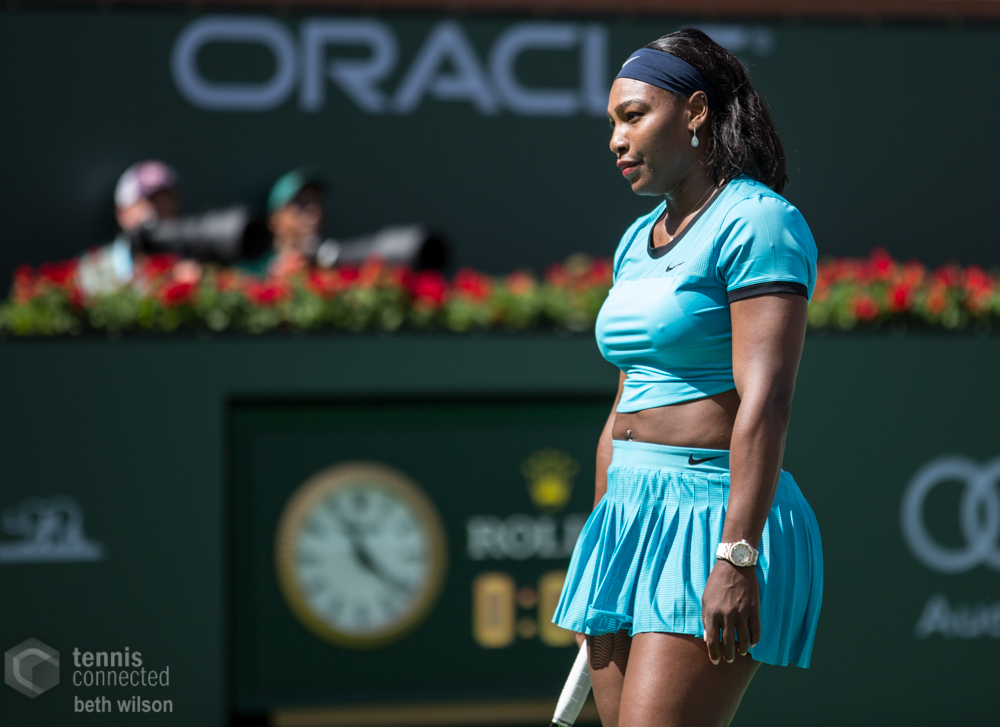Welcome to Tennis Elbow, the column that looks back on the week that was in the world of tennis. This week, Charles Blouin-Gascon recaps an eventful last weekend at the 2018 Wimbledon.
Welcome to Wimbledon 2018, where we learned that just because you’re the world’s most prestigious tournament doesn’t meant that you can’t mess up.
The problem with expecting things to run smoothly is what happens when they don’t. When there’s a hiccup of, say, two five-plus-hour matches on the Friday reserved to the men’s semifinal, what’s your contingency plan for the Saturday?
If you’re Wimbledon, and you’ve just witnessed the, let’s be real here, pretty boring slugfest between Kevin Anderson and John Isner that lasted six hours and 35 minutes, and had a ton of aces and not much else, after which came the ensuing semifinal and that this too profiled as another marathon match, so much so that you needed to suspend play late on Friday evening, well if you’re Wimbledon then, apparently you decide to stick to your traditions even though there’s no reason to.
When the folks from the All-England Lawn Tennis and Croquet Club were faced with this scenario, they could, and should, have settled on a pretty easy and straightforward scenario.
Two things that exist in the world:
-the hour of 11 am
-Court 1@Wimbledon, TAKE ADVANTAGE OF WHAT NATURE’S GOD HAS GIVEN YOU AND DO NOT BUMP A ***PREVIOUSLY SCHEDULED FINAL***
— Brian Phillips (@brianphillips) July 13, 2018
It was right there staring them in the face, move the end of the Rafael Nadal and Novak Djokovic semifinal to Court 1 and at an earlier time, and carry on with the women’s final as planned. Easy.
Not easy if you’re Wimbledon however. In an effort to give everyone their shine, the powers that be ended up slighting the very two women they were hoping to help out.
It’s dire when you gotta wait forever to play your SF in #Wimbledon.
But imagine playing one of the single biggest matches of the year in the tennis calendar and you don’t know if you’ll start at 2pm or at 4pm. That’s awful for Williams and Kerber and awful for women’s tennis.
— René Denfeld (@Renestance) July 13, 2018
If it wasn’t already crystal clear, tennis really does have double standards and, as a whole, does see women’s tennis as the “lesser” form of tennis. You’ve scheduled the grand final of the women’s draw, one between the best player in the history of the sport and another who’s probably the first’s most potent rival at this point, and you decide to push this match back to, what, accommodate an ongoing men’s semifinal?
Come on.
We can’t even really blame Anderson and Isner who competed in the first men’s semifinal either; sure, their match lasted long, until 26-24 in the fifth set, but it’s not like they were both actively trying to take as long as possible. And it’s not like it’s their fault that their fifth set had no tiebreak. No, this is not on Anderson or Isner, nor is it on Nadal or Djokovic either.
This is all on Wimbledon. The tournament, it’s no secret, loves its traditions—sorry, looooooooooves them. They just love, you know, their all-white dress code, their nice little courts with no sponsor logos whatsoever, or their middle Sunday off.
For the most part, this is all fine. Cathedrals are ancient and old, but they’re also impressive and gorgeous—and if Wimbledon likes to carry on like a Cathedral, they’re well within their rights to do so because most of its traditions are harmless.
let’s review:
Women’s Singles final: no guaranteed start time
Women’s Doubles final: no guaranteed court assignment— Jason (@Hurleytennis) July 13, 2018
Hilarious seeing people say the women not having a set start time is a “non-issue” when really they should just be saying “I don’t care about women”.
— Brodie (@MindTheRacket) July 14, 2018
On the other hand, it’s a problem when some of these traditions, which don’t make a whole lot of sense to begin with, have real-life repercussions. There’s no point to eating strawberries and cream but in the end, that’s all you’re doing so whatever.
But there’s no real rhyme or reason behind the lack of a fifth set tiebreak on the men’s side, other than the fact that it’s always been this way, and in the end you might be stuck playing six and a half hours just to make the final. Not only will this put you at a disadvantage in the final, but it delays the start of a second semifinal that’s already likely to last long because it pits two incredible competitors who are also renown for playing very slowly.
And in the end, you manage to steal the sunshine from two incredible players in the women’s final.
Thankfully, Kerber and Williams managed to shine all the brighter when they did step on the court—or rather, Kerber did. Williams was mostly powerless as Kerber played near perfect tennis with just five unforced errors to capture her third Grand Slam title.
At least Wimbledon had decided to open the Centre Court roof, which it had closed for reasons we can’t understand for the finish of Nadal and Djokovic’s semifinal.
Too little, too late.
Follow Charles Blouin-Gascon on Twitter @RealCBG


























